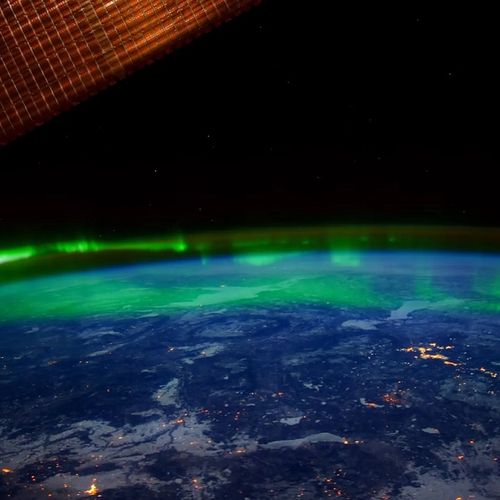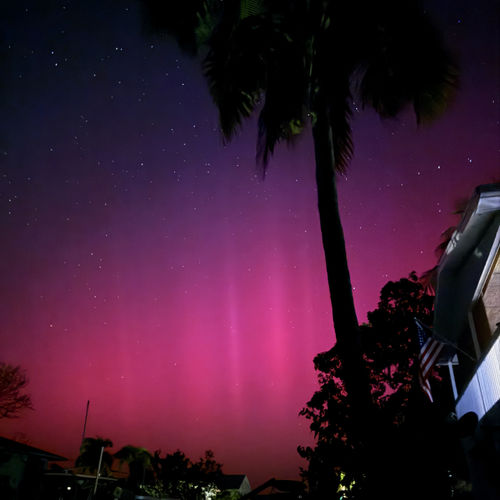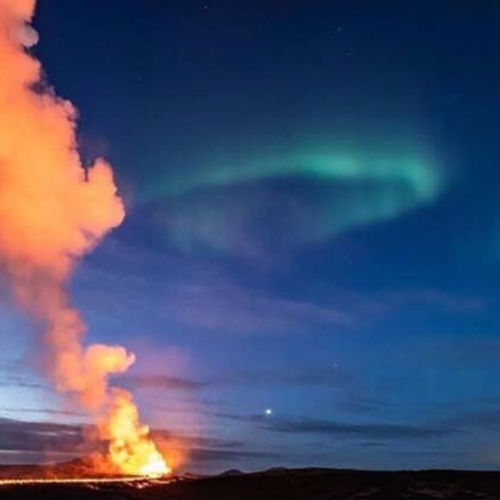
| Added | Fri, 22/12/2023 |
| Источники | |
| Дата публикации | Fri, 22/12/2023
|
| Версии |
In mid-December 2023, a surge in solar activity led to the appearance of mesmerizing auroral lights in the northern latitudes of Canada. These bright lights were captured by the VIIRS (Visible Infrared Imaging Radiometer Suite) radiometer set on the NOAA-NASA Suomi NPP satellite in the early morning of December 17, 2023. In the day-night range, VIIRS recorded the aurora glow, which ranged from green to near infrared wavelengths.
The cause of these stunning auroras can be traced back to several coronal mass ejections observed on December 14th and 15th. These emissions, which contain large amounts of plasma from the Sun's corona, carry a built-in magnetic field. When these ejected particles interact with the Earth's upper atmosphere, they create dazzling light effects known as auroras.
The recent surge in solar activity is a sign that the Sun is approaching the peak of the 25th solar cycle, which is projected to occur around July 2025. Solar cycles usually last about 11 years, and during their peak, the Sun's magnetic field reverses. Scientists monitor the number and location of sunspots - dark blots on the surface of the Sun that are associated with solar eruptions - to track fluctuations in solar activity.
Interestingly, the auroras captured in Canada appeared a few days after the strongest solar flare in this solar cycle. Solar flares that reach Earth in a matter of minutes can disrupt radio communications. Coronal mass ejections, by contrast, take several days to reach Earth, and they often coincide with solar flares.
Aurors have fascinated scientists and observers throughout human history. The ancient Greeks considered them a sign of the gods, and the Inuit considered them spirits dancing in the sky. Today, the development of technology allows us to film and study these heavenly wonders in more detail.
In anticipation of the peak of the 25th solar cycle in 2025, scientists and space agencies such as NASA continue to monitor the activity of the Sun and its potential impact on Earth. Understanding the complex relationship between the Sun and our planet not only expands our knowledge of the universe, but also helps protect our technological infrastructure from solar storms.
Новости со схожими версиями
Log in or register to post comments









